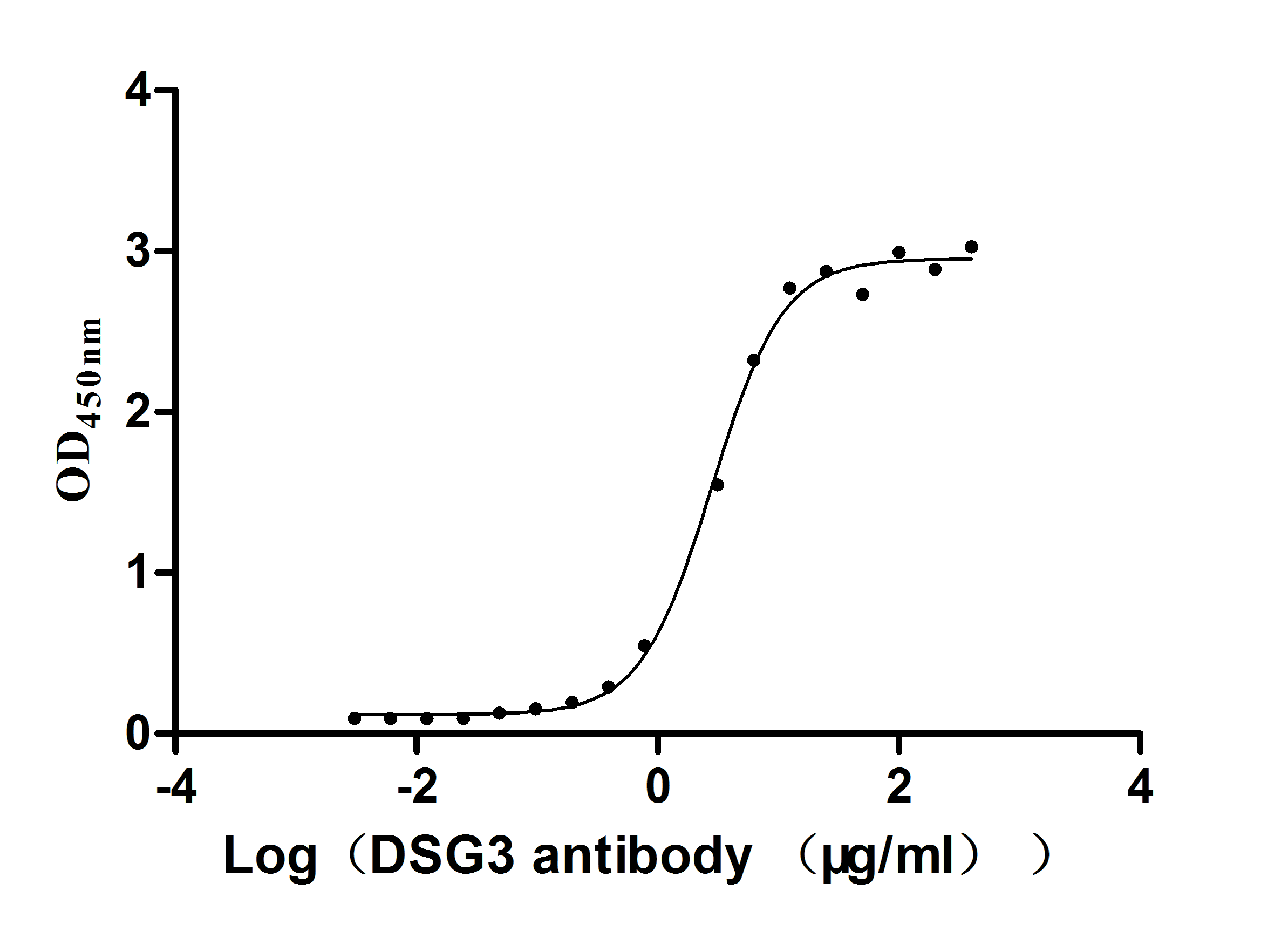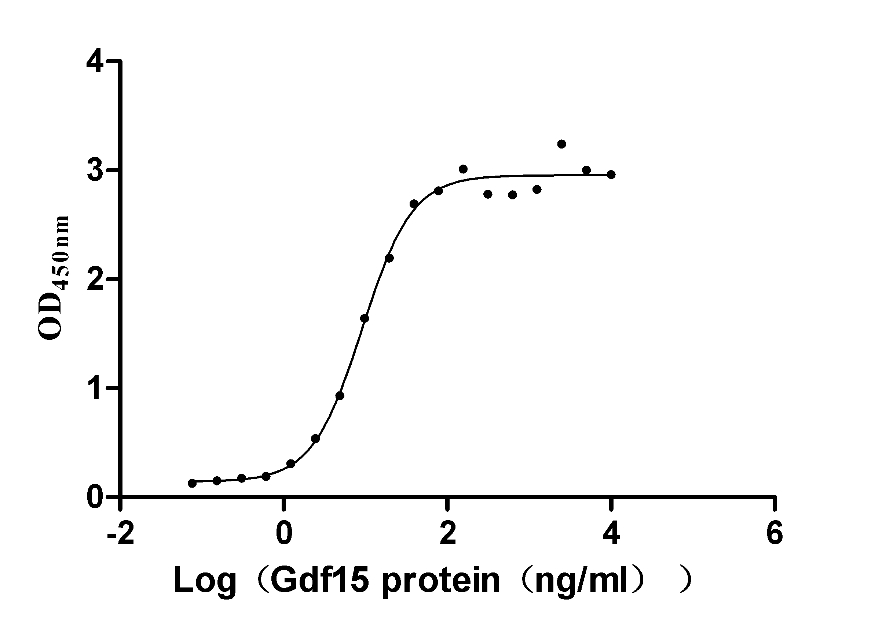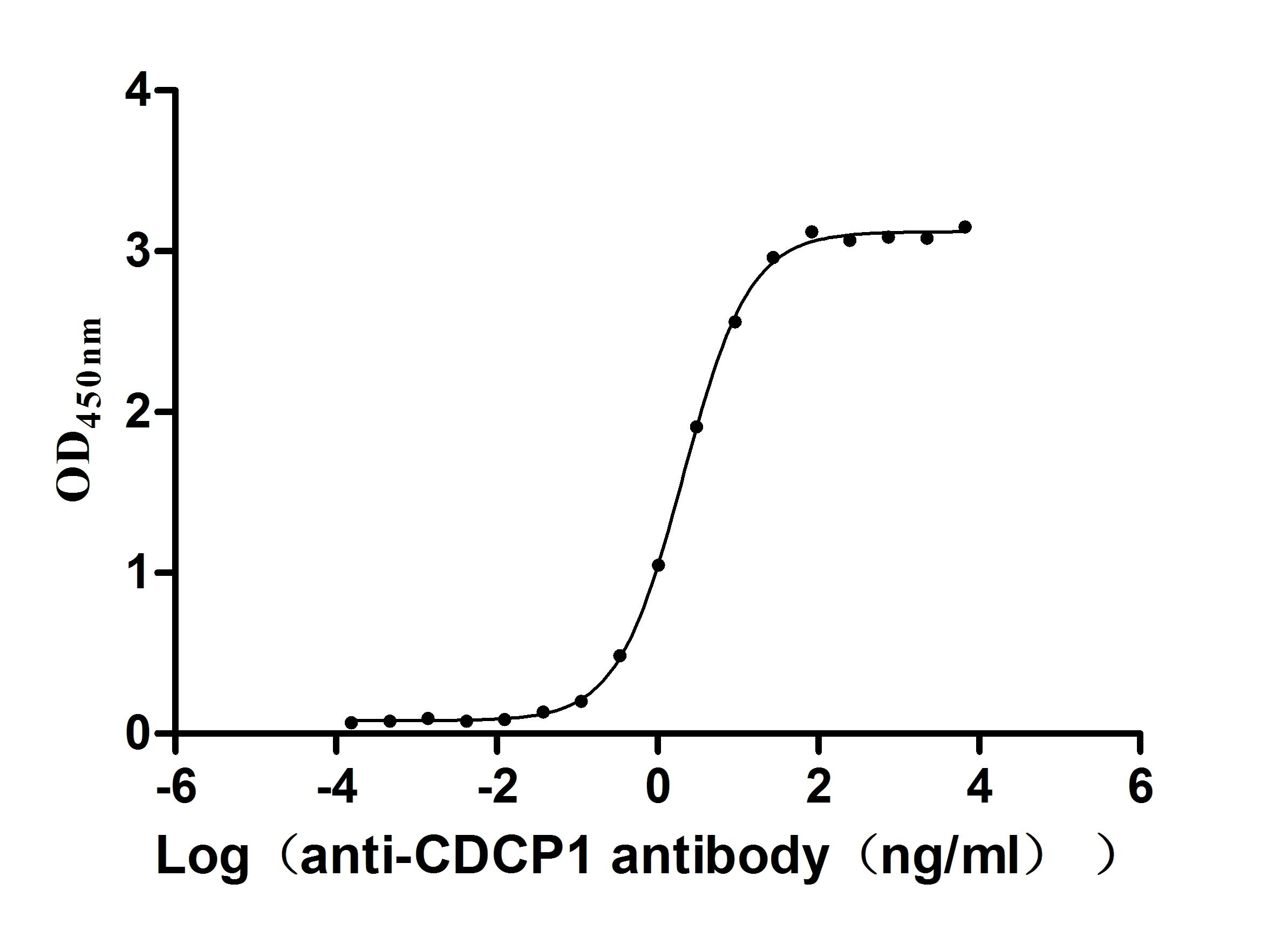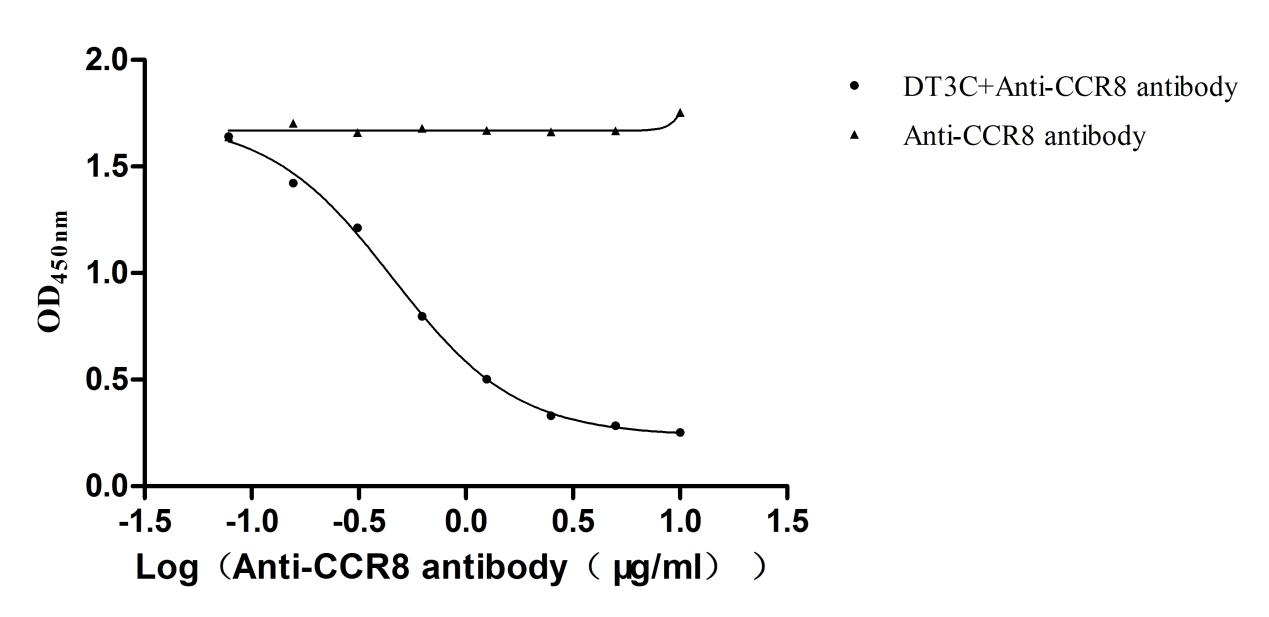Recombinant Human Metal transporter CNNM4 (CNNM4), partial
-
货号:CSB-YP764727HU1
-
规格:
-
来源:Yeast
-
其他:
-
货号:CSB-EP764727HU1
-
规格:
-
来源:E.coli
-
其他:
-
货号:CSB-EP764727HU1-B
-
规格:
-
来源:E.coli
-
共轭:Avi-tag Biotinylated
E. coli biotin ligase (BirA) is highly specific in covalently attaching biotin to the 15 amino acid AviTag peptide. This recombinant protein was biotinylated in vivo by AviTag-BirA technology, which method is BriA catalyzes amide linkage between the biotin and the specific lysine of the AviTag.
-
其他:
-
货号:CSB-BP764727HU1
-
规格:
-
来源:Baculovirus
-
其他:
-
货号:CSB-MP764727HU1
-
规格:
-
来源:Mammalian cell
-
其他:
产品详情
-
纯度:>85% (SDS-PAGE)
-
基因名:CNNM4
-
Uniprot No.:
-
别名:CNNM4; ACDP4; KIAA1592; Metal transporter CNNM4; Ancient conserved domain-containing protein 4; Cyclin-M4
-
种属:Homo sapiens (Human)
-
蛋白长度:Partial
-
蛋白标签:Tag type will be determined during the manufacturing process.
The tag type will be determined during production process. If you have specified tag type, please tell us and we will develop the specified tag preferentially. -
产品提供形式:Lyophilized powder
Note: We will preferentially ship the format that we have in stock, however, if you have any special requirement for the format, please remark your requirement when placing the order, we will prepare according to your demand. -
复溶:We recommend that this vial be briefly centrifuged prior to opening to bring the contents to the bottom. Please reconstitute protein in deionized sterile water to a concentration of 0.1-1.0 mg/mL.We recommend to add 5-50% of glycerol (final concentration) and aliquot for long-term storage at -20℃/-80℃. Our default final concentration of glycerol is 50%. Customers could use it as reference.
-
储存条件:Store at -20°C/-80°C upon receipt, aliquoting is necessary for mutiple use. Avoid repeated freeze-thaw cycles.
-
保质期:The shelf life is related to many factors, storage state, buffer ingredients, storage temperature and the stability of the protein itself.
Generally, the shelf life of liquid form is 6 months at -20°C/-80°C. The shelf life of lyophilized form is 12 months at -20°C/-80°C. -
货期:Delivery time may differ from different purchasing way or location, please kindly consult your local distributors for specific delivery time.Note: All of our proteins are default shipped with normal blue ice packs, if you request to ship with dry ice, please communicate with us in advance and extra fees will be charged.
-
注意事项:Repeated freezing and thawing is not recommended. Store working aliquots at 4°C for up to one week.
-
Datasheet :Please contact us to get it.
相关产品
靶点详情
-
功能:Probable metal transporter. The interaction with the metal ion chaperone COX11 suggests that it may play a role in sensory neuron functions. May play a role in biomineralization and retinal function.
-
基因功能参考文献:
- Jalili Syndrome is a rare cone-rod dystrophy (CORD) and amelogenesis imperfecta (AI), We have further characterized its ocular phenotype, including describing SD-OCT, FAF, and electrophysiological features; and report several novel disease-causing sequence variants. PMID: 29421294
- Here, we report the 2 first families with Jalili Syndrome in Brazil. Molecular analysis of the first family identified a previously described homozygous mutation (p.Leu324Pro) in exon 1 of CNNM4 gene. In the second family, affected patients demonstrated a compound heterozygous mutation in CNNM4, the p.Leu324Pro and the novel nonsense mutation p.Tyr581*. PMID: 29421602
- Results identified linkage at chromosome 2p14-2q14 and found a homozygous mutation in the CNNM4 gene (p.R605X) causing Jalili syndrome. The truncated CNNM4 protein starting at R605 significantly increased the rate of apoptosis, and significantly increased the interaction between CNNM4 and IQCB1. This mutation may cause Jalili syndrome by a nonsense-mediated decay mechanism, affecting the function of IQCB1 and apoptosis. PMID: 29322253
- Mutational analysis showed in all three brothers a novel likely pathogenic homozygous missense substitution in exon 1 (c.1076T>C, p.(Leu359Pro)) of CNNM4. Both parents were carriers for the variant. PMID: 28586144
- We describe three siblings with clinical features of Jalili syndrome with a homozygous missense mutation in exon 4 of CNNM4, c.1781A>G (p.N594S). PMID: 27070327
- These results suggest a new role of CNNM4 in sperm Ca(2+) homeostasis. PMID: 27006114
- We identified a novel homozygous deleterious mutation in CNNM4 gene which causes Jalili syndrome. PMID: 27419834
- used Sanger sequencing to analyze a large consanguineous family with three siblings affected with Jalili syndrome, suspected clinically after dental and ophthalmological examination. These patients are carrying a novel homozygous mutation in the splice site acceptor of intron 3 (c.1682-1G > C) in the CNNM4 gene PMID: 28246031
- these results indicate that CNNM4-dependent Mg(2+) efflux suppresses tumor progression by regulating energy metabolism. PMID: 25347473
- The c.1312 dupC mutation of CNNM4 leads to a premature termination of amelogenesis resulting in thin, incompletely mineralized enamel, whereas in dentin, only mineralization is disturbed. PMID: 24194943
- CNNM4 is sorted to the basolateral membrane by the complementary function of AP-1A and AP-1B PMID: 25449265
- Data indicate that a mutation in the cystathionine-beta-synthase (CBS) domains of ancient conserved domain protein 4/cyclin M4 CNNM4 completely abrogated their Mg2+ efflux functions. PMID: 24706765
- These results demonstrate the crucial importance of Mg(2+) extrusion by CNNM4 in organismal and topical regulation of magnesium. PMID: 24339795
- Our case shows a unique combination of NF1 and Jalili syndrome; clinical examination, but also of molecular genetic analysis, which together provide a precise diagnosis. PMID: 21728811
- This work describes the purification and preliminary crystallographic analysis of the CBS-pair regulatory domain of the human ancient domain protein 4 (ACDP4), also known as CNNM4. PMID: 21393841
- Identification of CNNM4 as the causative gene for Jalili syndrome, characterized by autosomal-recessive cone-rod dystrophy and amelogenesis imperfecta. PMID: 19200525
- Since CNNM4 is implicated in metal ion transport, cone-rod dystrophy and amelogenesis imperfecta may originate from abnormal ion homeostasis. PMID: 19200527
显示更多
收起更多
-
相关疾病:Jalili syndrome (JALIS)
-
亚细胞定位:Cell membrane; Multi-pass membrane protein.
-
蛋白家族:ACDP family
-
组织特异性:Widely expressed. Highly expressed in heart.
-
数据库链接:
HGNC: 105
OMIM: 217080
KEGG: hsa:26504
STRING: 9606.ENSP00000366275
UniGene: Hs.175043
Most popular with customers
-
Recombinant Mouse Desmoglein-3 (Dsg3), partial (Active)
Express system: Mammalian cell
Species: Mus musculus (Mouse)
-
Recombinant Mouse GDNF family receptor alpha-like (Gfral), partial (Active)
Express system: Mammalian cell
Species: Mus musculus (Mouse)
-
Recombinant Human C5a anaphylatoxin chemotactic receptor 1 (C5AR1)-VLPs (Active)
Express system: Mammalian cell
Species: Homo sapiens (Human)
-
Express system: Mammalian cell
Species: Macaca fascicularis (Crab-eating macaque) (Cynomolgus monkey)
-
Recombinant Human CUB domain-containing protein 1 (CDCP1), partial (Active)
Express system: Mammalian cell
Species: Homo sapiens (Human)
-
Recombinant Macaca fascicularis CUB domain containing protein 1 (CDCP1), partial (Active)
Express system: Mammalian cell
Species: Macaca fascicularis (Crab-eating macaque) (Cynomolgus monkey)
-
Recombinant Human Myosin regulatory light chain 12B(MYL12B) (Active)
Express system: E.coli
Species: Homo sapiens (Human)
-
Recombinant DT3C (Diphtheria toxin & spg 3C domain) for Antibody Internalization Assay (Active)
Express system: E.coli
Species: N/A




















